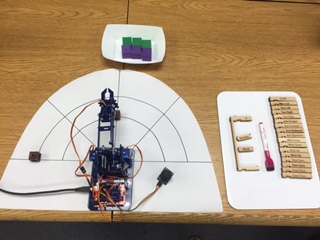University/Museum Partnership For Informal Education in Robotics
Abstract: Computing education is becoming a critical component for success in the modern job market. Computing is continually highlighted as a national priority of K-12 education. The experience and training required are a barrier to the introduction of courses or other educational models with computing content. In this proposal, we extend prior work that developed robotics modules for informal K-12 instruction in robotics and computing and utilize these materials for outreach to Nevada students through a collaboration with the Nevada Discovery Museum and the UNR Mobile Engineering Education Lab (ME2L). The current training paradigm for robotics instruction relies on primarily graduate study. Some advanced undergraduate courses may be available, but students typically have access to at most one or two of these courses. However, at the K-12 level, few robot enrichment activities exist. The result of this configuration is that students may not even learn that robotics is a field that they would like to pursue until late undergraduate education at the earliest. This could severely depress interest in robotics. A wealth of literature suggests, however, that children learn best when presented with playful, real world, “learn by doing” challenges (see, for example, Dewey, 1938; Vygotsky, 1978). Unfortunately, much education concerning computer programming may be currently framed as equivalent to asking students to “eat their vegetables” and memorize content rather than participating and learning from activities that are inherently rewarding. Computing can be difficult to teach, especially at the pre-college level. One reason for this difficulty is that computing relies on several other skills, such as algebra, sequential logic, and planning. Subsequently, there is a dearth of computing education in Nevada. Rather than focus on programming in a specific computer language, the proposed modules will focus on the fundamentals of computing: instructions, decisions, and loops; as well as the fundamental problems in robotics: sensing, planning, and actuation. Computing skills are often used in day-to-day activities. A recipe, for example, is a planned sequence of steps that when executed result in a dish. Directions are a similar example of programmatic sequences. This proposal will engage with the Terry Lee Wells Discovery Museum and the UNR Mobile Engineering Education Lab (ME2L) to develop and execute this type of skill-based real-world inspired computing instruction and to disseminate them widely to students from the Reno area. These activities have been shown to encourage interest and identity in STEM careers and education. We are excited to expand on this content and bring this to a wider audience.
Details
- Organization: Nevada Space Grant Consortium (NVSGC)
- Award #: NNX15AI02H
- Amount: $25,000
- Date: July 1, 2018 - April 9, 2019
- PI: Dr. David Feil-Seifer
- Co-PI:
Adam Kirn
Supported Projects
Robotics in the Classroom Jan. 1, 2014 - Present
 Robotics represents one of the key areas for economic development and job growth in the US. However, the current training paradigm for robotics instruction relies on primarily graduate study. Some advanced undergraduate courses may be available, but students typically have access to at most one or two of these courses. The result of this configuration is that students need several years beyond an undergraduate degree to gain mastery of robotics in the academic setting. This project aims to: alter current robotics courses to make them accessible for lower-division students; increase both the depth and breadth of the K-12 robotics experience; increase the portability of robotics courses by disseminating course materials online, relying on free and open-source software (FOSS), and promoting the use of simulators and inexpensive hardware. We will team with educators to study the effectiveness of the generated materials at promoting interest in robotics, computing, and technology at the K-5, 6-8, 9-12, and undergraduate grade levels.
Robotics represents one of the key areas for economic development and job growth in the US. However, the current training paradigm for robotics instruction relies on primarily graduate study. Some advanced undergraduate courses may be available, but students typically have access to at most one or two of these courses. The result of this configuration is that students need several years beyond an undergraduate degree to gain mastery of robotics in the academic setting. This project aims to: alter current robotics courses to make them accessible for lower-division students; increase both the depth and breadth of the K-12 robotics experience; increase the portability of robotics courses by disseminating course materials online, relying on free and open-source software (FOSS), and promoting the use of simulators and inexpensive hardware. We will team with educators to study the effectiveness of the generated materials at promoting interest in robotics, computing, and technology at the K-5, 6-8, 9-12, and undergraduate grade levels.
